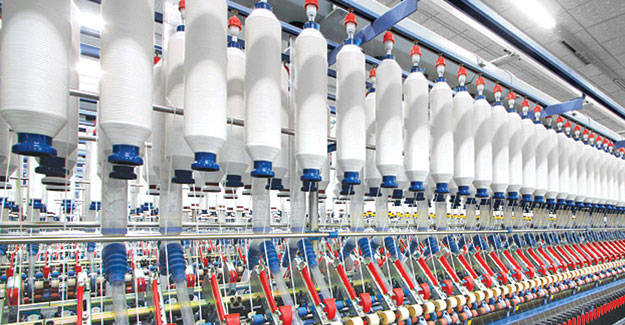
China's Textile Industry Will Face Bigger Challenge In May
Even as China's textile and apparel industry is facing unparalleled challenges, the bigger test is yet to come in May. Weavers cut output due to higher feedstock inventory By end-April, weavers had cut production even as prices fell rapidly. With export order cancellations, and dull domestic demand, weavers are saddled with high levels of inventories. This could lead to further production cuts. VFY It is currently known that two units of Jilin Chemical Fiber will be shut for maintenance in May, and the duration is about two months. Thus operating ratio will be lower or reduce to 86%-88%. In the case of production cuts, the tempo of rising inventory will slow down, and it is expected that the inventory will increase by about one week in May. Rayon yarn The number of days for May Day holidays was increased and it was not ruled out that most of mills may have 7-15 days leave. The O/R may be lower at 20% and can recover somewhat in the second half of May. Overall production control efforts in May may be greater than that in April, and inventory is expected to increase by a week in May. To stop production is difficult, but to keep output going is more difficult Due to uncertain external environment, the rayon grey fabric market participants were waiting on the sidelines and overall shipments were blocked with limited order demand and more drastic price competition. There were some mills which had holidays around 7-10 days before and after Tomb Sweeping Day in April. According to a survey, the effective O/R of weavers has fallen sharply this year. Among them, the decline was the worst in February, down over 60% year-on-year, and it then recovered in March and April, down by 30% year-on-year. Since there is still no obvious improvement in the supply and demand relationship, most of mills hold bearish sentiment towards the outlook. Weavers will still plan to stop production and have holidays around May Day. Fabric mills generally face the situation of "high inventory but difficult to resume production". As downstream manufacturers are cautious buyers and sellers, the main demand is concentrated in the field of epidemic prevention materials and nonwoven fabrics. Conventional rayon grey fabric demand remains weak, and finished goods inventory continues to rise. According to the survey, inventory of weavers is significantly higher than that in same period of past years. In 2016-2017, it was relatively low, ranging within 15-18 days; it has reached a high level of over one month in 2018-2020 and may climb up further after May. It is expected to reach a record high of more than 35 days. Thus, given the current situation of almost zero demand, high inventories, severe price competition, larger discounts could become the order of the day. Many weavers may have to take the decision to shut down again for the holidays. Small export orders return, but demand for cotton remains dull Chinese textile and garment factories received some export orders last week, and some delayed orders also were concluded. This will have some impact on the cotton market too. Cotton demand Spot cotton sales were frozen after intensive order cancellation around mid-March, and the situation worsened during the week from April 6-10, when traders basically saw no liquidity and large traders also witnessed dull transactions. From April 13, cotton transactions warmed up somewhat. Despite limited improvement, the downstream buying indication moved up somewhat, and when ZCE cotton futures market declined on April 21 and 22, on-call cotton sales were relatively good. On April 22, there were rumors that China would purchase 1 million tons of cotton into state warehouses, spot cotton transactions turned thinner again. Downstream demand for cotton Downstream plants have export orders successively from last week, and some delayed orders have also restarted. According to the survey, new export orders are very limited, and domestic sales are also dull. Thus cotton purchases by mills are need based. In China's local market, the competition is fierce, margins are squeezed, and cotton yarn prices are at a record low. Inventories are high. Most downstream plants worry that domestic demand may turn worse as wages in the country may go down on average, and seasonal demand shrinks.
Textile Excellence
If you wish to Subscribe to Textile Excellence Print Edition, kindly fill in the below form and we shall get back to you with details.








